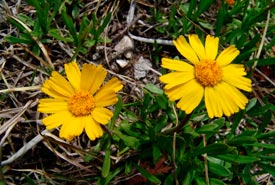Plants
-
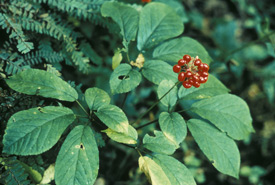
American ginseng
American ginseng is a rare plant found in deciduous forests. It has been used for its medicinal properties around the world.
-
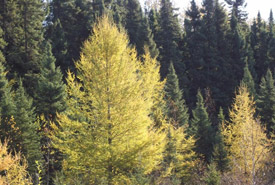
American larch
American larch, also known as tamarack, is a medium to large coniferous tree that is also deciduous. This means that unlike most other conifer species, whose needles remain in place all year long, this tree’s needles fall to the ground in autumn and grow back in spring.
-
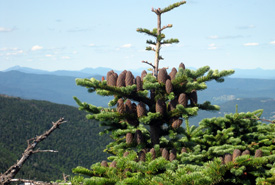
Balsam fir
Balsam fir trees are medium-sized evergreen conifers. They are often used as Christmas trees because of their pleasant smell and the fact that their needles remain in place long after the trees have been cut.
-
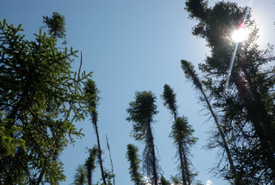
Black spruce
Black spruce trees can reach heights of up to 30 metres and diameters of 23 to 36 centimetres. The top of a typical black spruce consists of a cluster of branches.
-
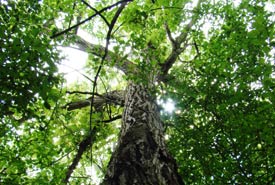
Butternut
The butternut tree is in the walnut family and is one of two species of walnut native to Canada. On average, butternuts are short-lived trees, living up to 80 years of age.
-
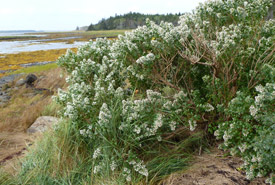
Eastern baccharis
Eastern baccharis is a salt marsh shrub and, in Canada, measures around one to three metres tall.
-
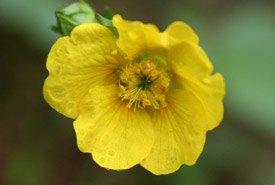
Eastern mountain avens
Small and fragile, and not likely well known, the eastern mountain avens is, in fact, one of the most endangered plants in Canada.
-
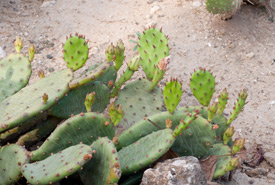
Eastern prickly pear cactus
The eastern prickly pear cactus is a perennial succulent cactus, with jointed, curved yet flat green stems. Each of its segments is called a pad and comes equipped with sharp spines and barbed bristles.
-
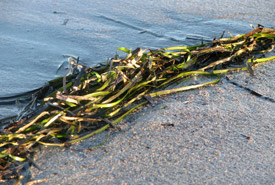
Eel-grass
In British Columbia's Campbell River Estuary, Cynthia Durance floats above an underwater meadow, wearing scuba diving equipment. Diving to the muddy bottom among the waving ribbons of green, she plants shoots of grass in groups of 10.
-
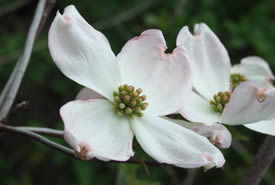
Flowering dogwood
In Canada, flowering dogwood can only be found in southern Ontario in the Carolinian zone, a small area of Ontario southwest of Toronto that stretches down to the shores of Lake Erie and southwestern Lake Huron.
-
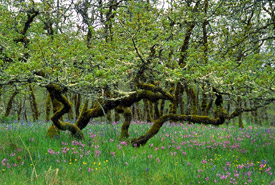
Garry oak
Many species of oak are known to exist worldwide. Approximately 500 species of Quercus oaks have been identified by taxonomists, of which 95 occur in North America.
-
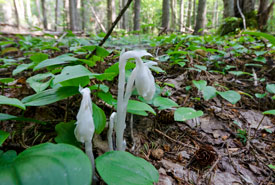
Ghost pipe
The ghost pipe, also called the ghost plant or corpse plant, is a perennial wildflower that gets its name from its shape and its pure, pale white colour.
-
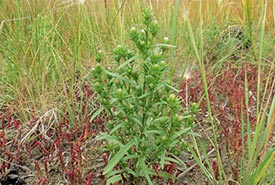
Gulf of St. Lawrence aster
The Gulf of St. Lawrence aster is a fleshy annual plant with clusters of small, white to pinkish flowers.
-
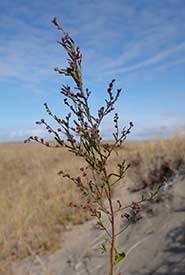
Gulf of St. Lawrence beach pinweed
Gulf of St. Lawrence beach pinweed is a highly specialized beach dune species.
-
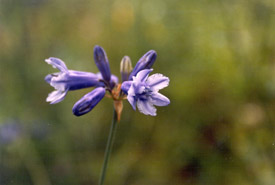
Howell's triteleia
This perennial herb has vase-like flowers that are either white or blue in colouration.
-
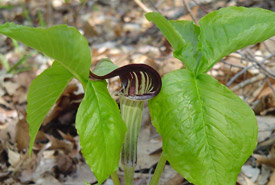
Jack-in-the-pulpit
Jack-in-the-pulpit is so-named because it resembles a preacher standing in a pulpit.
-
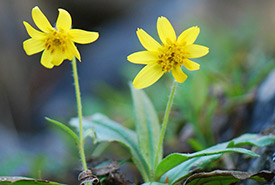
Lake Louise arnica
Lake Louise arnica is a small, perennial herbaceous plant in the sunflower family, named for Lake Louise in the Canadian Rockies.
-
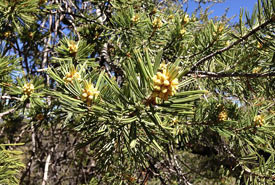
Limber pine
Limber pine (also known as Rocky Mountain white pine) is a species of white pine, typically found in the montane and subalpine natural sub-regions of the Rocky Mountains.
-
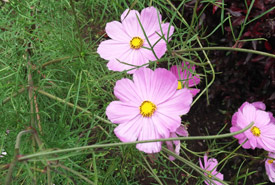
Pink coreopsis
Pink coreopsis, also known as pink tickseed, is a perennial herbaceous plant with 20- to 60-centimetre-long stalks and pink or white flowers with yellow centres.
-
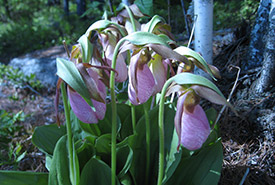
Pink lady's-slipper
The pink lady’s-slipper, or moccasin flower, is a perennial orchid. Its name comes from its pink, hollow, pouch-shaped flower, which looks like a slipper.
-
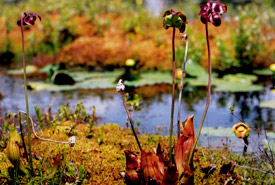
Pitcher plant
There is only one species of pitcher plant in Canada. The purple pitcher plant, or northern pitcher plant, referred to simply as pitcher plant in Canada, is one of the 18 species of carnivorous plant species in the country.
-
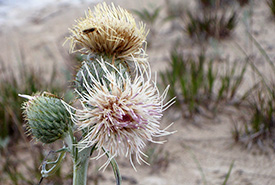
Pitcher's thistle
Pitcher’s thistle is a globally rare wildflower that flowers once in its lifetime. It is found in small populations on sand dunes and beaches of the upper Great Lakes.
-
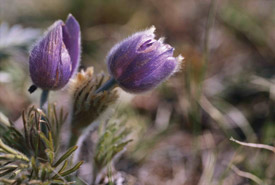
Prairie crocus
A flower of many names, prairie crocus is also known as gosling plant, pasque-flower, windflower and more. The furry perennial is not actually a crocus or even a member or the lily family but an anemone, belonging to the buttercup family.
-
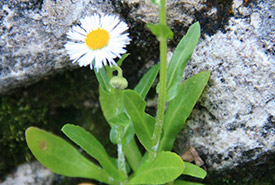
Provancher's fleabane
Provancher’s fleabane resembles the common daisy, and you may even confuse it for the widespread Philadelphia fleabane. But unlike its common look-a-likes, Provancher’s fleabane is incredibly rare.
-
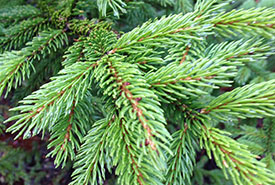
Red spruce
Red spruce is a medium-sized conifer and the provincial tree of Nova Scotia.Its conical-shaped crown extends almost all the way to the ground, providing important winter shelter for wildlife.
-
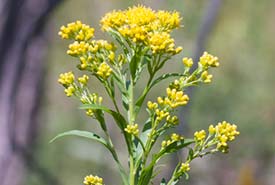
Riddell's goldenrod
Often confused for a weed, this plant, with its showy yellow flowers on tall stems, is a common sight in late summer and early fall.
-
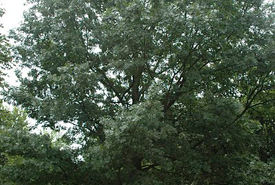
Shumard oak
As one of the largest of the oaks, mature Shumard oak can grow up to 40 metres tall, with massive branches, under ideal conditions.
-
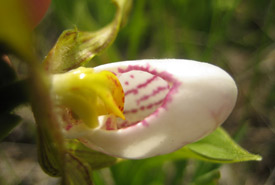
Small white lady's-slipper
The small white lady’s-slipper is a perennial orchid, meaning it survives year after year as an underground stem. The plant can reach heights of 10 to 35 centimetres.
-

Spotted wintergreen
This threatened species, once found in both Ontario and Quebec, is now only seen in southern Ontario.
-
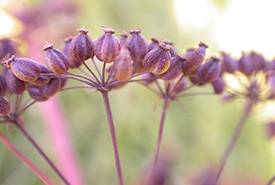
Victorin's water-hemlock
Victorin's water-hemlock is an endemic flower found along shoreline areas of the St. Lawrence River estuary in Quebec.
-
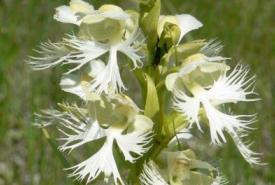
Western prairie white-fringed orchid
The elusive western prairie white-fringed orchid is an endangered species found in one of the rarest ecosystems in North America — the tall grass prairie. The orchid is named after its geographic location, as well as its physical appearance.
-
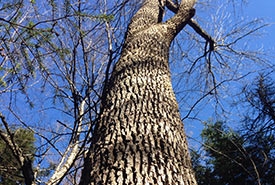
White ash
The white ash tree gets its name from the pale, silvery undersides of its leaves and the pale bark on its branches and twigs.
-
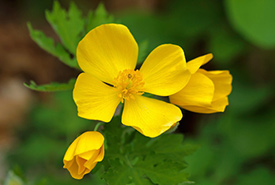
Wood-poppy (celandine poppy)
This species is threatened by habitat loss and invasive species, such as garlic mustard and Japanese knotweed.


